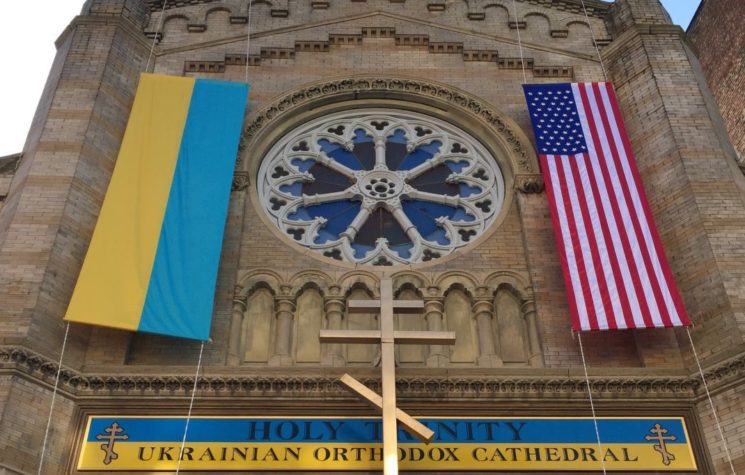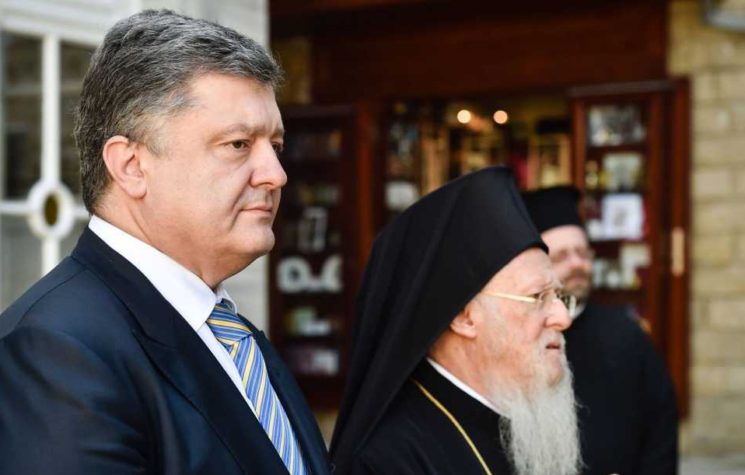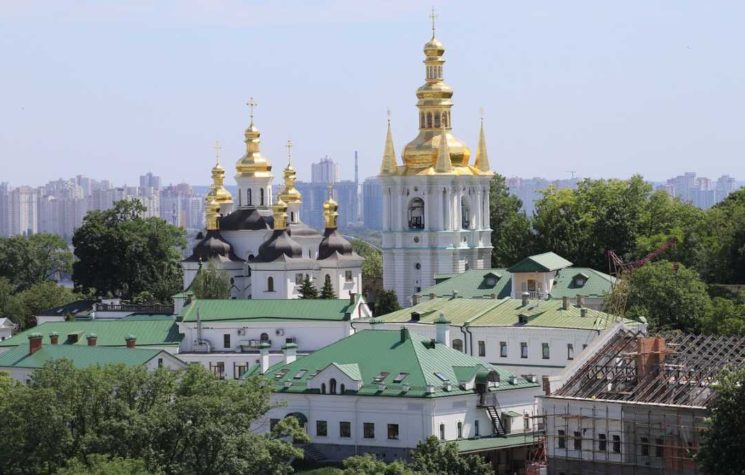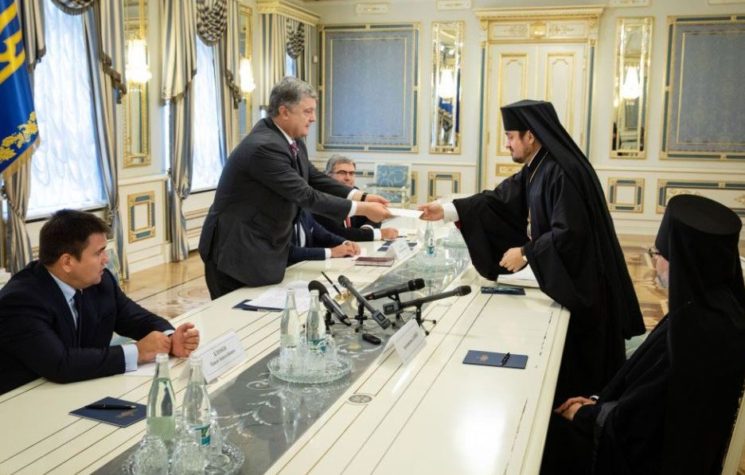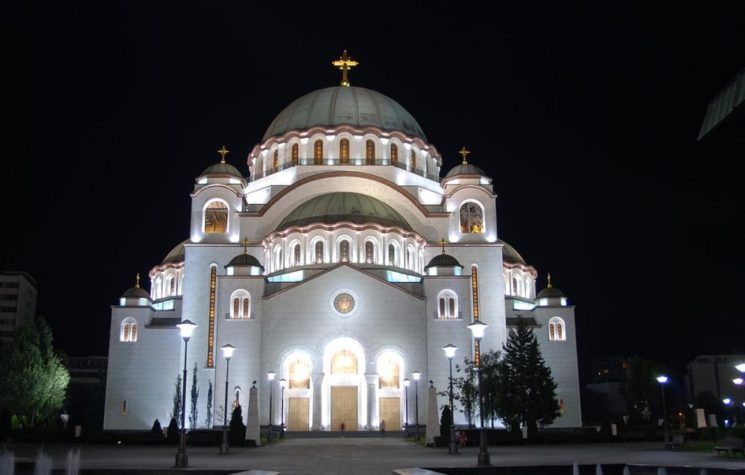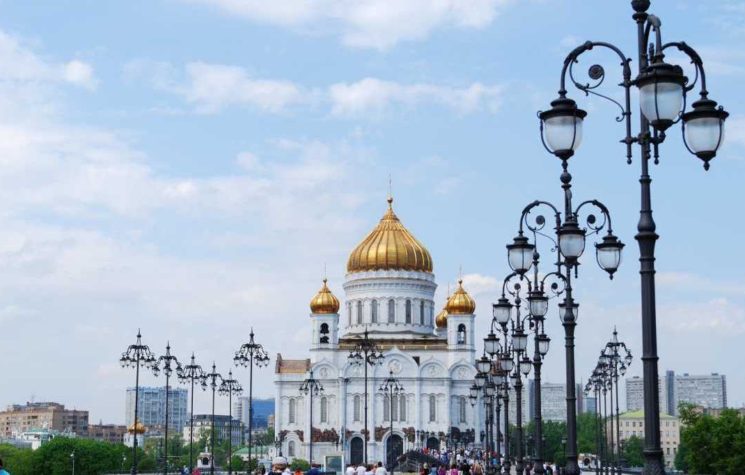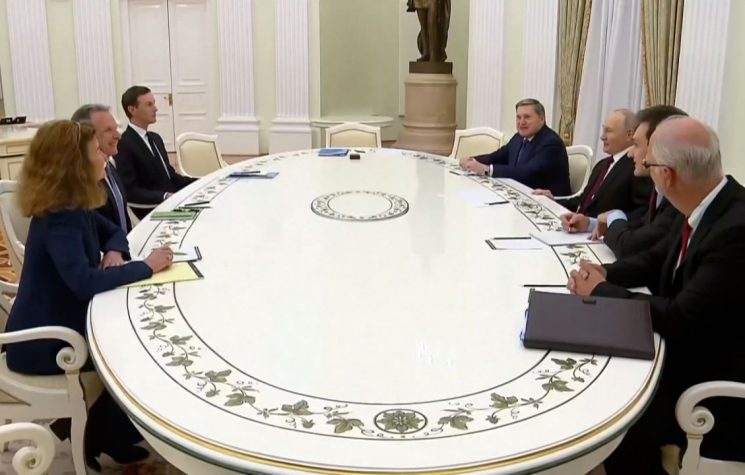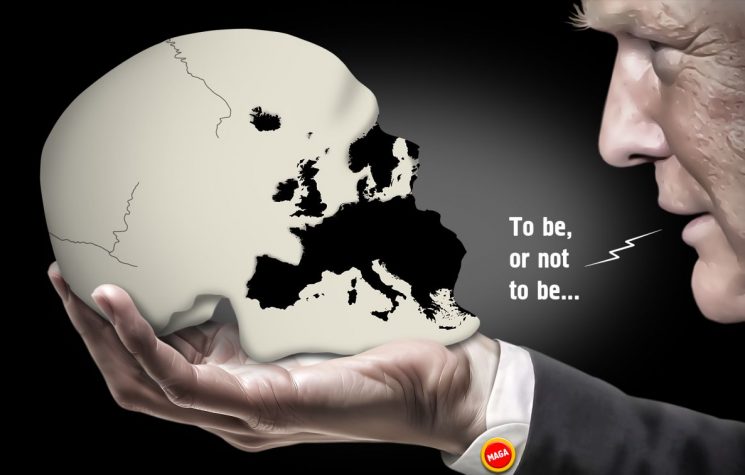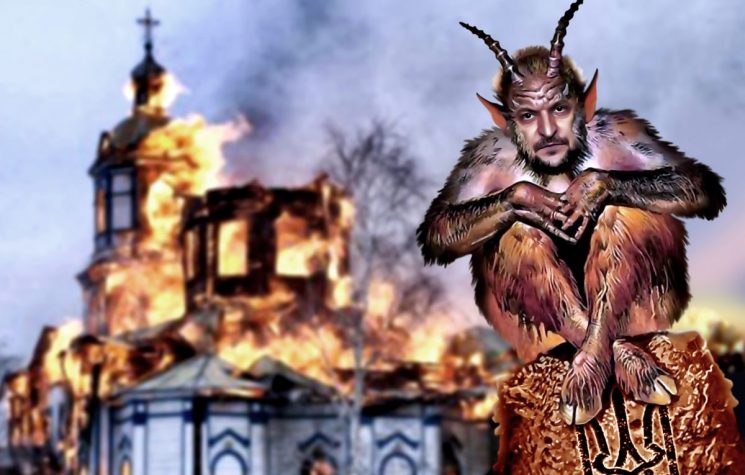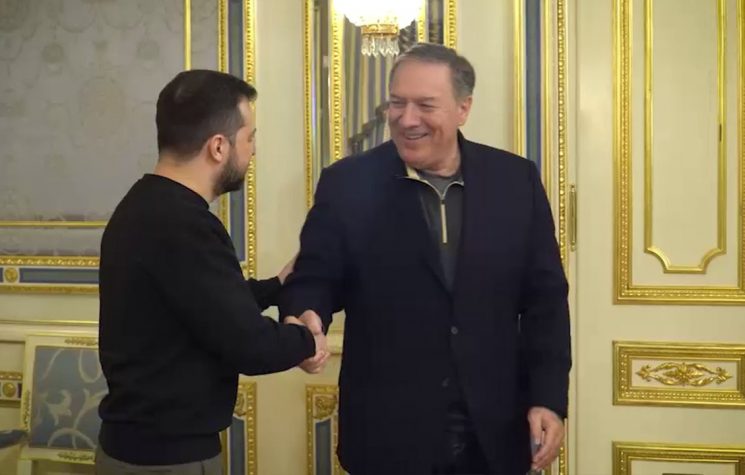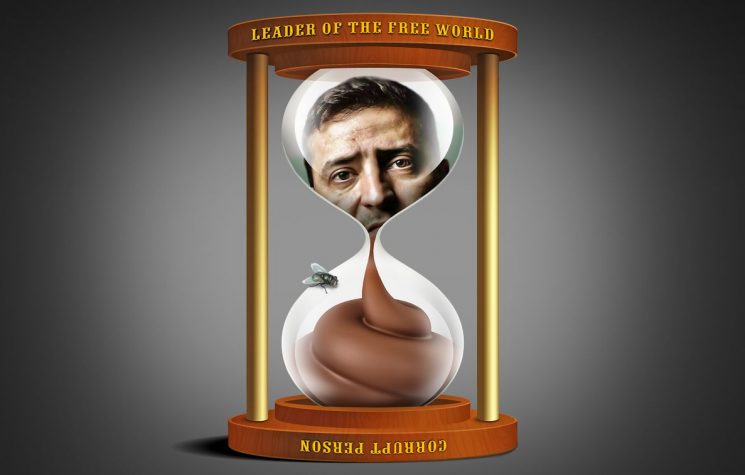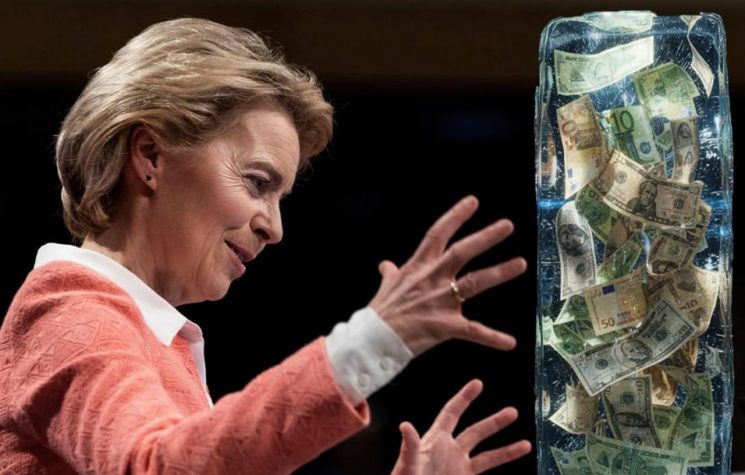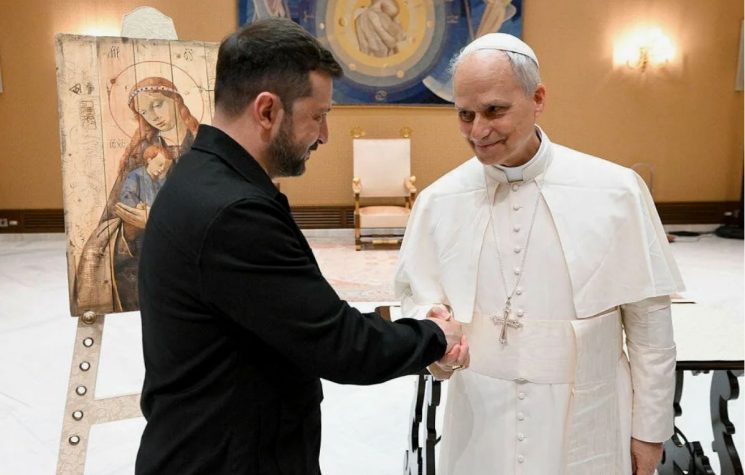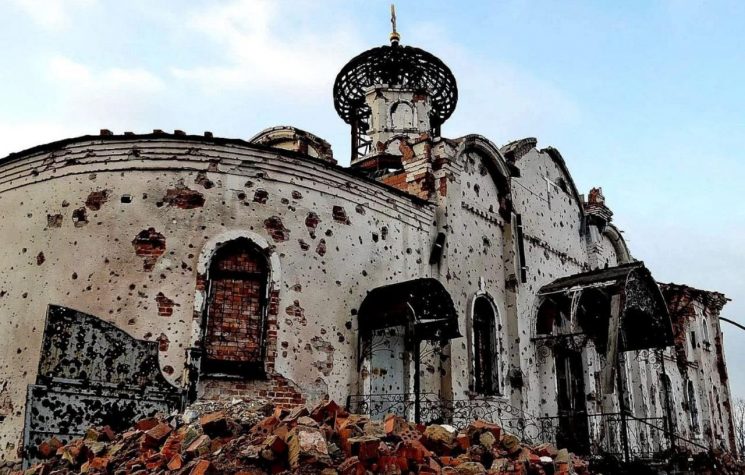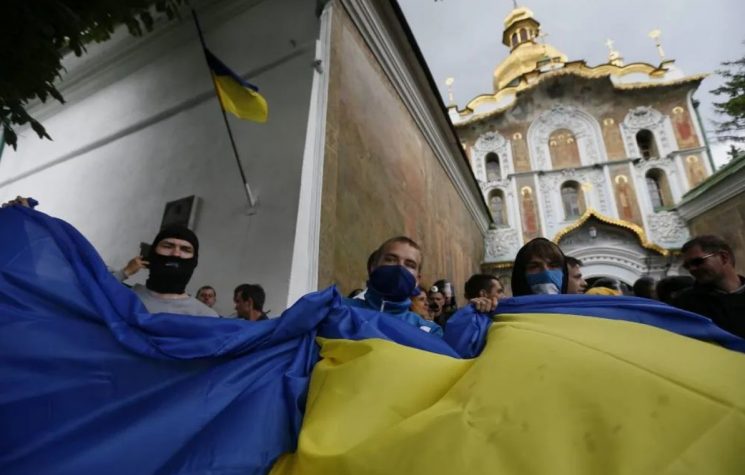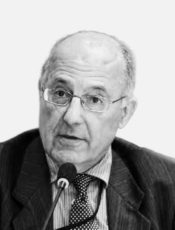At one point in his memoirs Third Reich’s wartime soft power emissary in the Balkans, Hermann Neubacher, also known as Hitler’s der fliegende Diplomat, recounts that when in 1943 on the various battlefields the Reich’s fortunes waned, he was tasked with making the rounds of Orthodox Church dignitaries in the occupied Balkans to “animate” them to actively join the faltering crusade against the Soviet Union.
With the wisdom of hindsight we all know, of course, the results of Neubacher’s mission. The interesting question is, have there been since then any essential changes in the West’s strategic playbook? One wouldn’t think so, in light of American “diplomacy” toward the Orthodox world.
A recent documentary on the “Russia 24” (Россия24) television channel exposed the details of the renewed effort to mobilize susceptible elements within world Orthodoxy for a new crusade against Russia and its Orthodox Church. Its stark title, “Schism” (Raskol), neatly summarized the political vector of the entire operation.
The operation’s two epicenters at the moment are the West’s long-time strategic asset, the ecumenical Patriarchy in Constantinople, and the “Ukrainian Orthodox Church,” the canonically dubious entity the Patriarchy has recently set up. That provoked the most serious divisions that the Orthodox world had seen in a long time. We saw it coming and in July 2018 described its initial stages in “NATO’s Eastward Push Clashes with Church Canons in the Ukraine.”
The exacerbation of the religious situation in the Ukraine, involving the cobbling together of three uncanonical supposedly orthodox religious entities into a thinly disguised nationalist sect called the Ukrainian Orthodox Church, would not have occurred but for the discreet prompting of NATO partners and the willing cooperation of the Constantinople Patriarchy, which issued what purports to be an official blessing, or Tomos, to that effect in January 2019.
Since the only existing canonical Orthodox religious body in the Ukraine is an autonomous part of the Russian Orthodox Church, the mother church in Moscow has understandably taken a very dim view of Constantinople’s jurisdictional encroachments on its territory. It has consequently broken communion with the church in Constantinople. Orthodox churches around the world are now expected to take sides, either recognizing Constantinople’s power grab and the newly improvised Ukrainian nationalist church resulting from it, thus validating the geopolitical project of its makers and manifestly non-orthodox sponsors, or flatly refusing to do so and facing their wrath.
The current offensive has all the hallmarks of an attempt to reconfigure the world Orthodox communion in order to make it more amenable and NATO-friendly. In order to appreciate the scope and gravity of such interference in Church affairs, some things should be borne in mind. The ecumenical Patriarchy in Constantinople enjoys a first-among-equals status, but no more. It is not the eastern equivalent of the Papacy, with its own centralized apparatus and command structure. In the loosely confederated Orthodox Church communion, all important decisions are taken by consensus, not by decree. Raising the ecumenical patriarch to the status of an “eastern Pope,” with corresponding authority over local churches, if successful, would create a previously non-existent religious power center. Conveniently, whoever controlled that center would also be in a position to influence and substantially control the second most numerous Christian group in the world, which also happens to be strategically concentrated in areas of critical importance to any hypothetical military confrontation with Russia. The Germans grasped it then, and NATO knows it today.
A brief summary of the background and recent activity of NATO proxies and “flying diplomats” points rather unequivocally to the project’s inspiration and ultimate objectives.
It so happens that as far back as 1937 the ecumenical Patriarchy in Constantinople had taken under its jurisdiction the emigre Ukrainian Orthodox Church in the US which, since its founding in 1919 by nationalist exiles, had had no official status. A relationship that initially may have started as a practical measure to augment the flock of a beleaguered Patriarchy in Muslim Turkey, later turned into a useful Cold War destabilization tool. As we saw more recently, in its current incarnation it serves as an effective Cold War 2 religious battering ram.
- In November 2018, the Constantinople Patriarchy announced, ostensibly out of the blue, that it had redacted a draft constitution for a Ukrainian Orthodox Church and jointly with Petro Poroshenko it issued a statement of intent to grant it independence (autocephaly), notwithstanding the fact that the latter was a secular official with no authority in church matters.
- By a strange coincidence, on 13 December 2018, Filaret Denisenko, the self-proclaimed metropolitan of one of the schismatic bodies projected to be fused into the new church, awarded the medal of “St Andrew the First Called” to Jack Devaine, former Acting Director and Associate Director of the CIA’s operations outside the United States, “for support for the creation of a united national Ukrainian Orthodox Church.”
- On 15 December 2018, by another sheer coincidence, a unity congress of until then unrecognized Ukrainian Orthodox splinter groups was held in Kiev, selecting former bishop Epiphanius as their metropolitan and receiving approval from Constantinople the same day.
- Bartholomew, the ecumenical Patriarch in Constantinople, apparently taking his cue from the Kiev assembly, on 5 January 2019 issued a Tomos recognizing the independence of the new entity and delivered it to Epiphanius the following day, 6 January.
- Medal giver Filaret, in turn, was shortly thereafter honored by Poroshenko with the “Hero of Ukraine” medal for “his historic contribution to the creation of an independent Orthodox Church in the Ukraine.”
- Unsurprisingly, in the light of these activities on 21 April 2019 Russian Foreign Minister Sergey Lavrov officially declared that there was sufficient evidence to suggest that the “autocephaly” of the “new church” in the Ukraine was supported and inspired from beyond the ocean, thus “committing a frontal attack on Orthodoxy”.
- This assessment was generally validated by the ensuing Western campaign to gain recognition for the separatist Ukrainian church, a religious center designed to spiritually complement the pro-Western political regime previously installed in Kiev. Beyond normalizing the status of this highly irregular entity within the Orthodox world, the further objective of the lobbying effort undertaken by NATO sponsors was to incite an Orthodoxy-wide split by framing the issue brutally in terms of pro- and anti-Moscow Patriarchy (and by extension, Kremlin) alignment, thus deepening religious animosities to their utmost extreme.
- Hermann Neubacher’s current successor as the “flying diplomat” appears to be Samuel Brownback, euphemistically described as “the US Ambassador at Large for International Religious Freedom”. Brownback has over the last several months lobbied intensely among Balkan Orthodox churches for official recognition of the new Ukrainian church that NATO and the ecumenical Patriarchy in Constantinople have concocted, but with variable success. While the meeting with the Bulgarian Patriarch Neophit was anything but a resounding success, pressure deftly applied on the Greek hierarchy has apparently borne fruit, resulting in precisely the commitment the ambassador desired. His arm-twisting visit to Mount Athos (Brownback even endured an Orthodox liturgy in an effort to impress the monks) has so far been only partially successful, with a clear majority of monastery abbots still indisposed to adhere to the NATO party line on the Ukrainian issue.
- And in an unmistakable signal of favor from on high (which is not necessarily an allusion to God Almighty) the newly enthroned Ukrainian hierarch was the recipient of the “Patriarch Athenagoras [predecessor of Bartholomew, also in thrall to identical geopolitical interests] Human Rights Award” bestowed at the Hilton Midtown hotel in New York on 19 October 2019. Previously, on 3 October, as part of his US tour, Epiphanius had met for a chat with William Taylor, US ambassador to the Ukraine. Another unscheduled coincidence, no doubt.
By all accounts, NATO planners are still keenly mindful of Zbigniew Brzezinski’s abiding fear that should Moscow somehow manage to bring Ukraine back into its fold and reintegrate its considerable population and natural resources, along with gaining much broader access to the Black Sea, it would automatically acquire the means to once again become a great imperial power, stretching across Europe and Asia. By bolstering NATO’s Ukrainian dependency with a newly crafted religious identity, artificially constructed and canonically incoherent as it may be, the power and influence of Russia are sought to be diminished. The crude maneuver using another dependency, the Constantinople Patriarchy, as a proxy to attempt to deepen the wedge between the two Orthodox churches and nations serves precisely that purpose.








